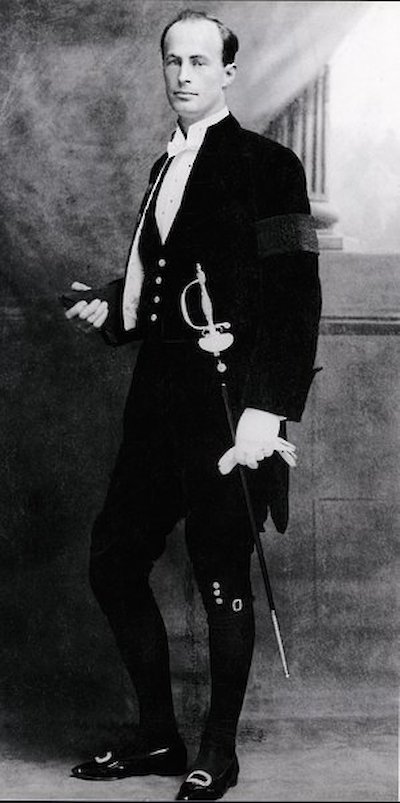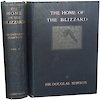Lost in the deluge
The early years of the twentieth century were marked by prosperity and peace — all the necessary social conditions that had enabled large, well-funded exploring expeditions to head off to the other side of the world in pursuit of impossible dreams. But there was trouble on the horizon, and the English summer of 1914 was to be the final expression of this Edwardian age.
Douglas and Paquita Mawson did attract some attention in London society, attending theatre and opera performances and joining an Australian contingent at an Anglo-American ball. It was the story of Robert Scott’s death on the Ross Ice Shelf at the end of a long South Pole march that seized the public’s imagination that summer, which did little for Mawson’s promotional efforts but did land the AAE a £1000 donation from Kathleen Scott — part of the proceeds of Scott’s Last Expedition, published in 1913.
Early in June Mawson addressed the Royal Geographical Society about the scientific work of AAE, using lantern slides prepared by Frank Hurley. Ernest Shackleton was there, as was a contingent of men from the AAE including Davis and two of his officers (John Blair and Percy Gray), Frank Wild, Archie McLean, Arthur Hodgeman, Francis Bickerton and Cecil Madigan. And Belgrave Ninnis the elder, father of the young man whose death had so changed the course of the AAE. The AAE, said the society’s president, Douglas Freshfield, in introducing Mawson, was:
… one of the most remarkable expeditions that has ever sailed into the polar regions, … for the scientific results which it has brought back … [and for] extraordinary fortitude under the most difficult circumstances … [T]here has been no Antarctic expedition the results of which, geological, glaciological or in the way of throwing light on the past history of our planet, have been richer …
On 13 May, the man whose name had been given to the territory covered in his own tragic Antarctic march — King George V — received Mawson at Buckingham Palace. On 22 May Mawson was the guest at an official luncheon held by Sir George Reid, Australia’s High Commissioner in London. And on 29 June came the summons to St James’s Palace that Mawson had long been expecting. He emerged Sir Douglas Mawson, an honour recognising outstanding service to king and empire. He was all of 32 years old.
Mawson, deeply immersed in the task of bringing the story of the AAE to the British public, went back to work. But already the signs were there that his efforts would be de-railed by larger events. The day before his investiture, Archduke Ferdinand of Austria was assassinated in Sarajevo, bringing Europe to the brink of war. And by early 1915, when the two-volume The Home of the Blizzard was published by Heinemann of London, the world’s attention had been gripped by the conflict that would engulf whole nations — including Mawson’s antipodean home.




